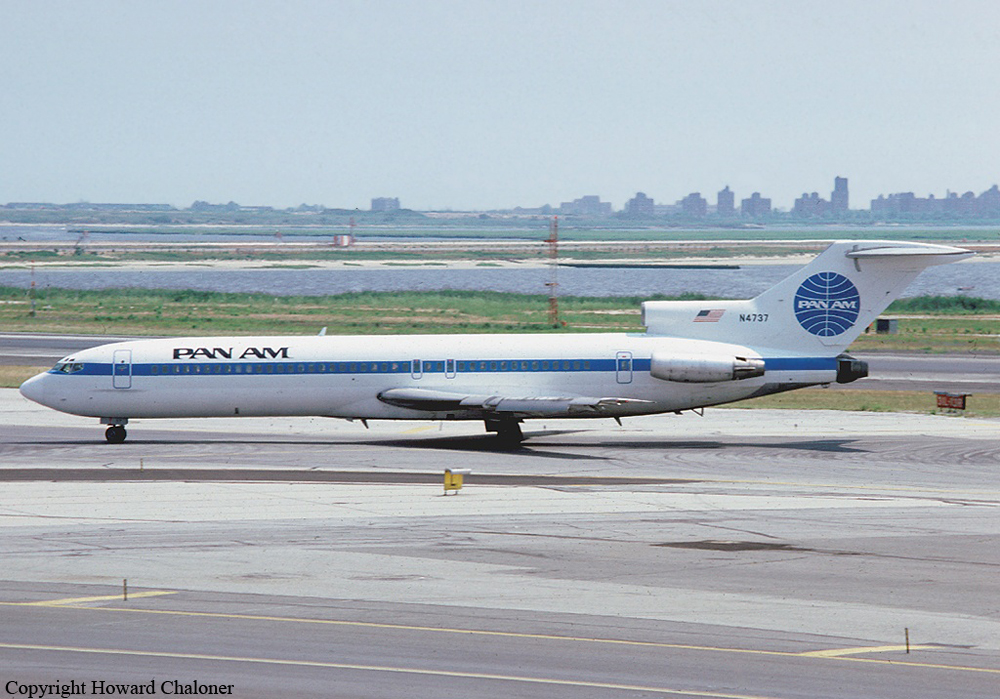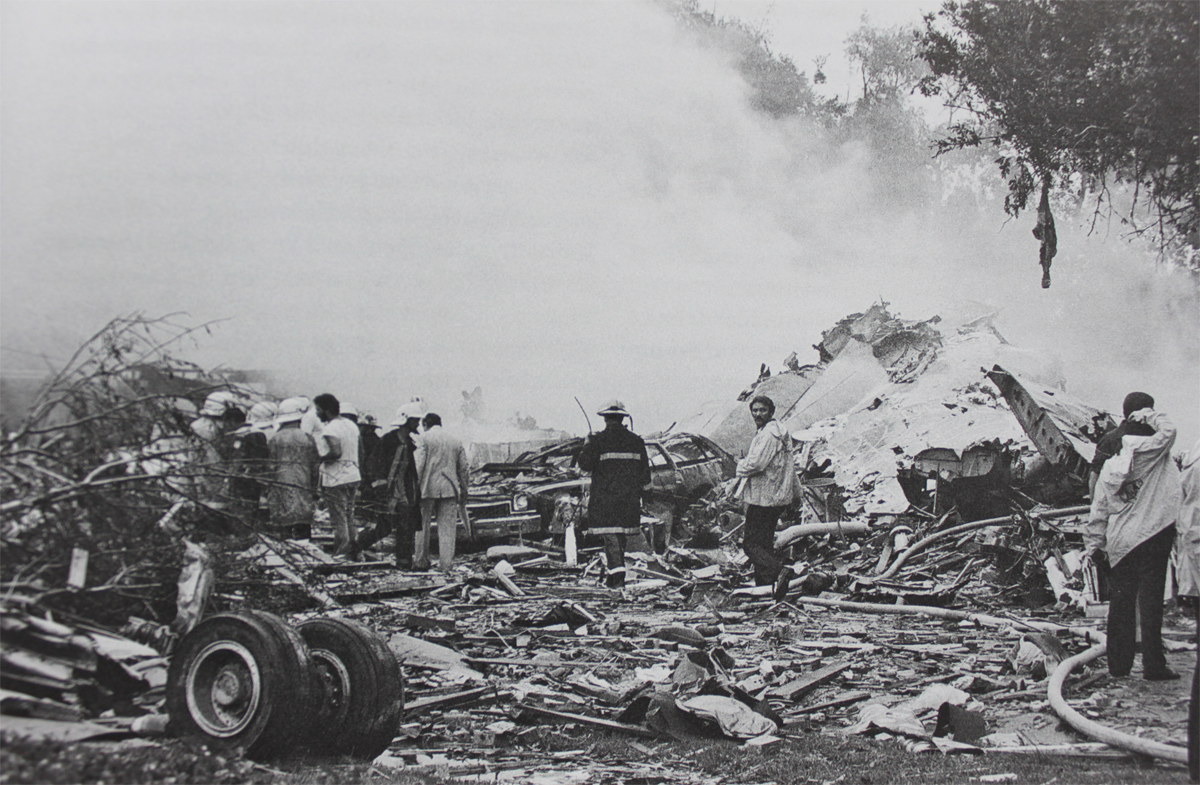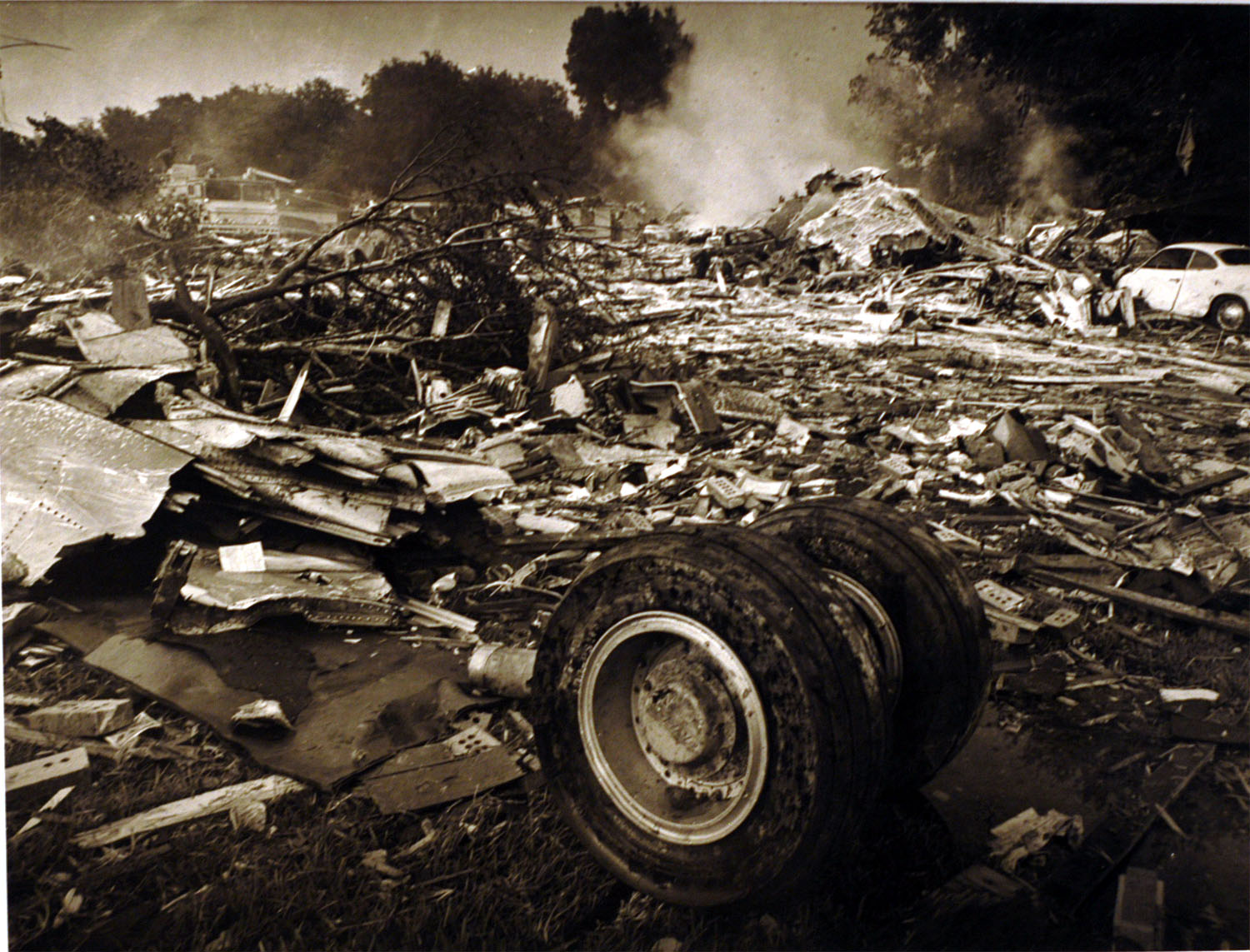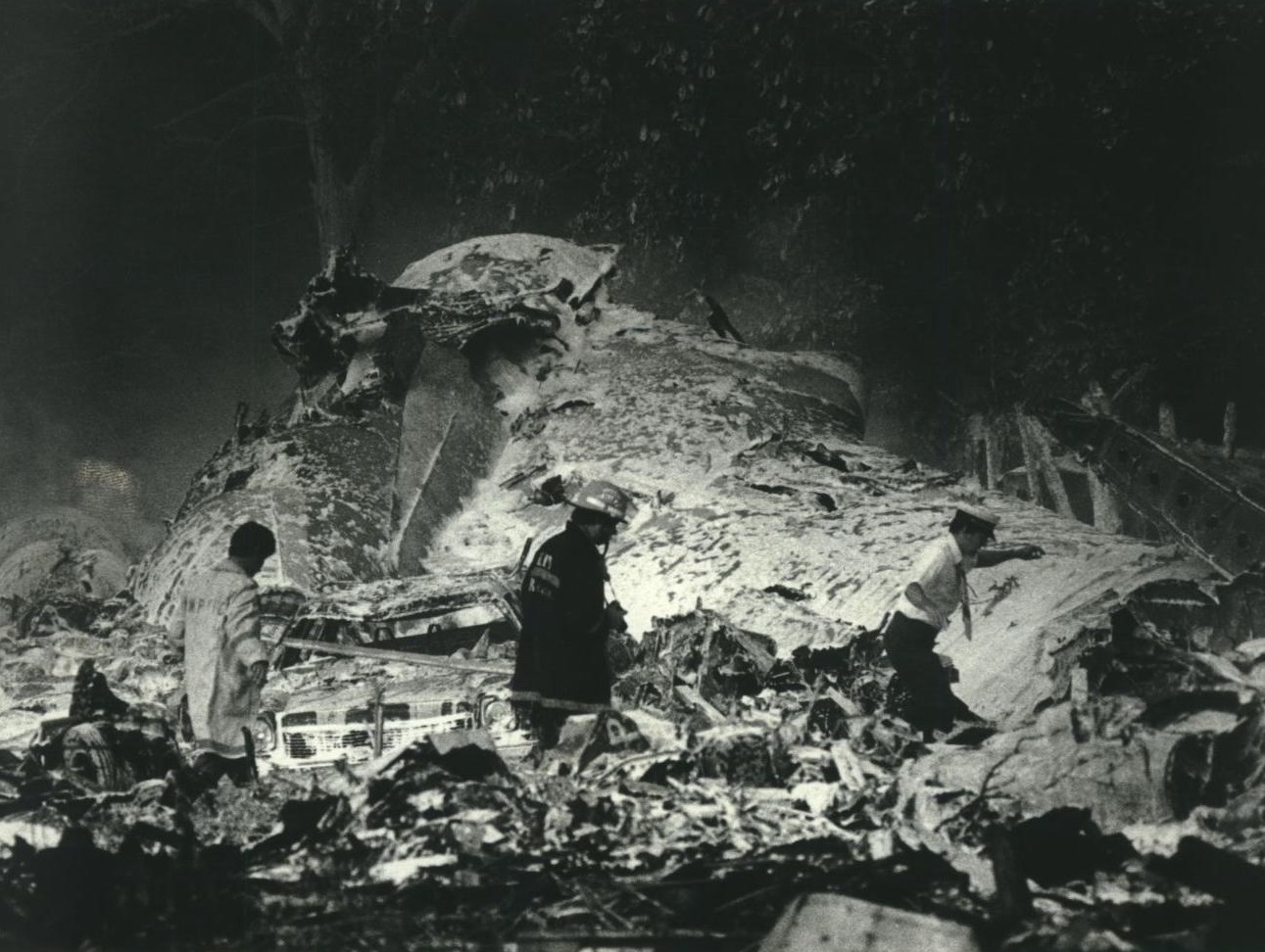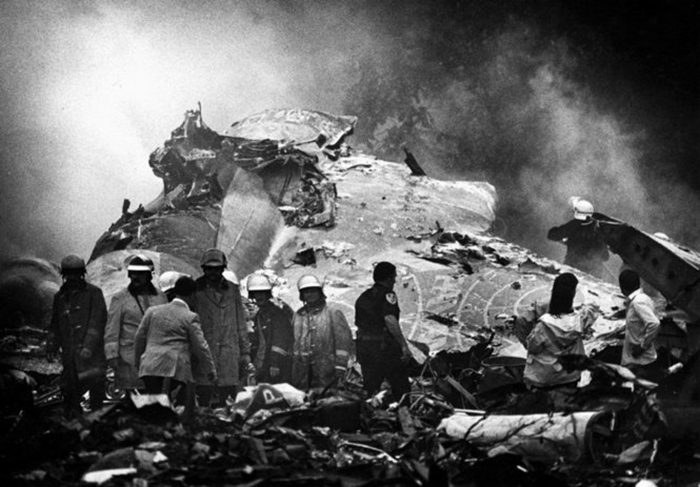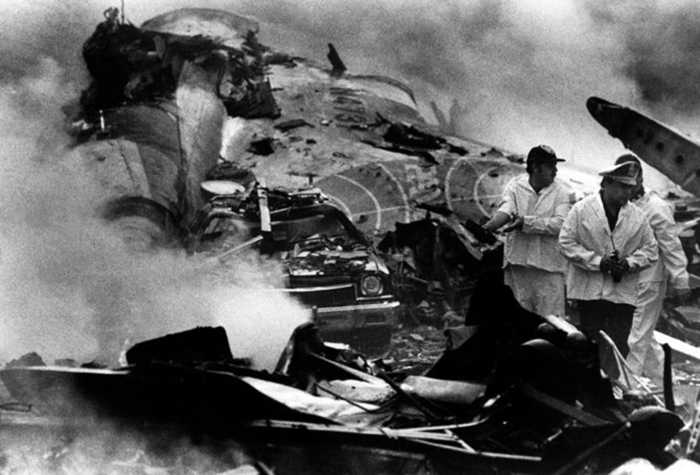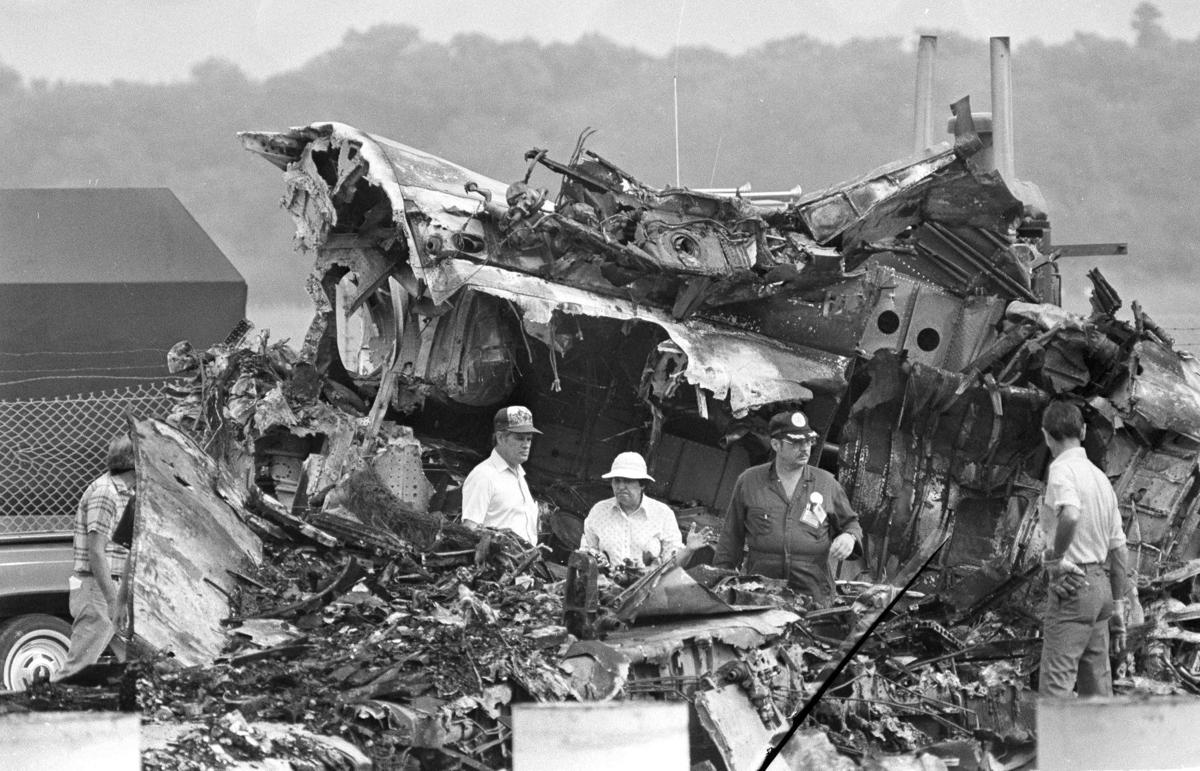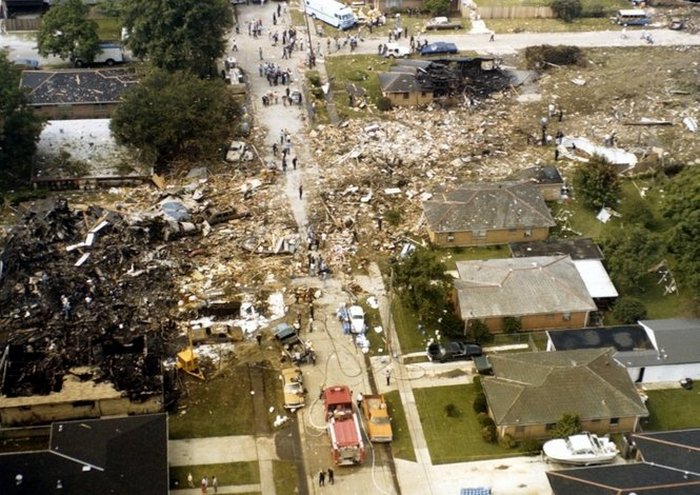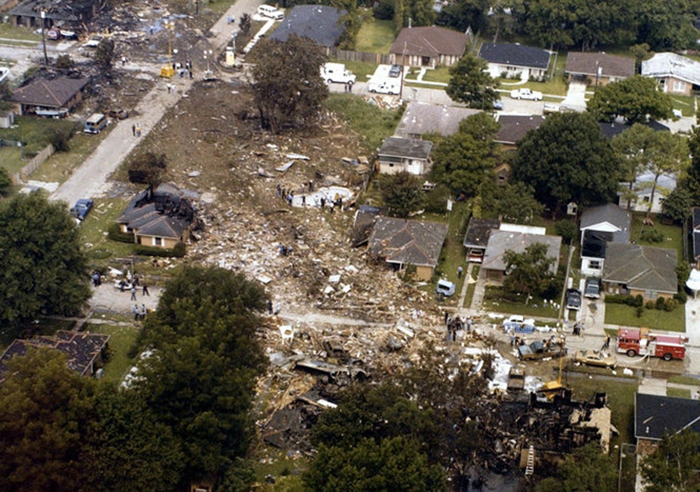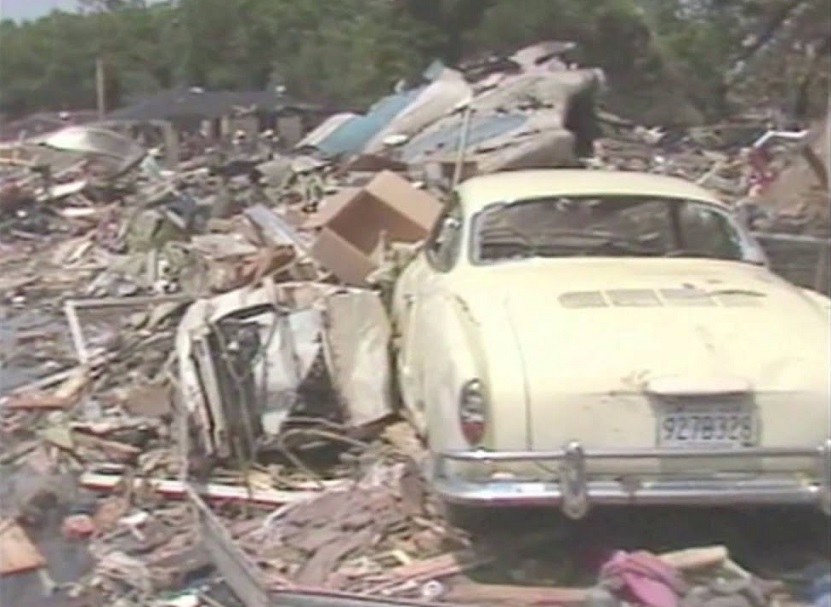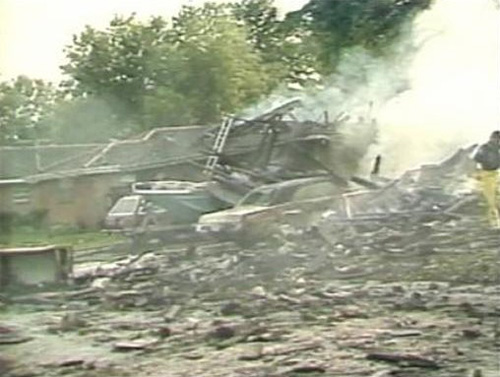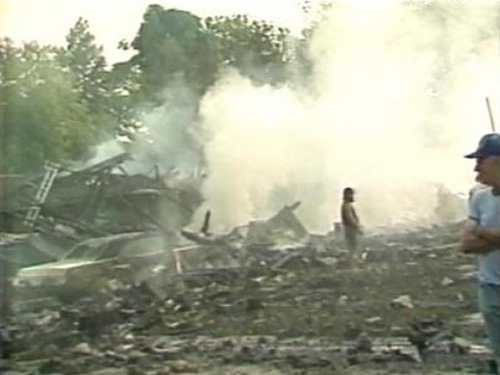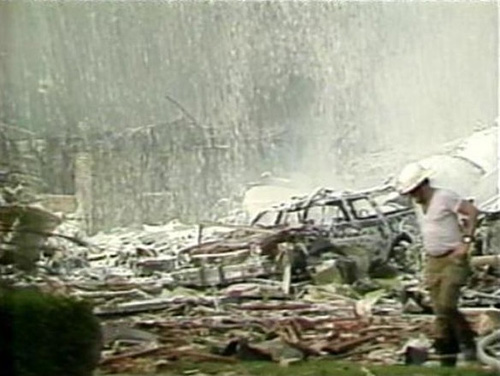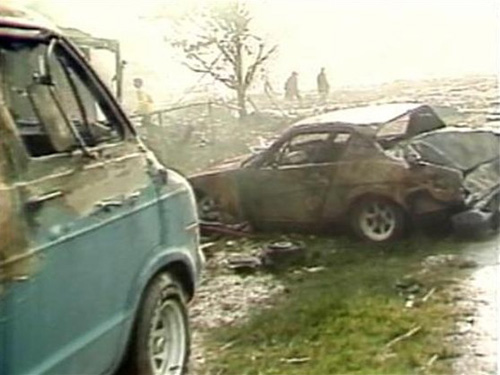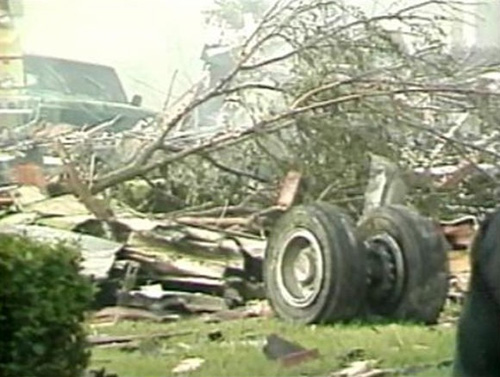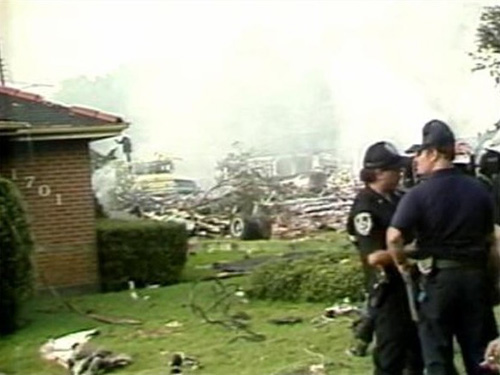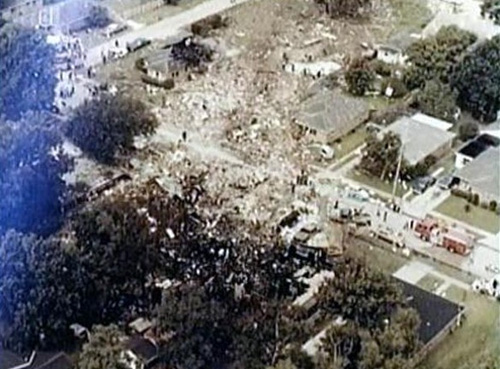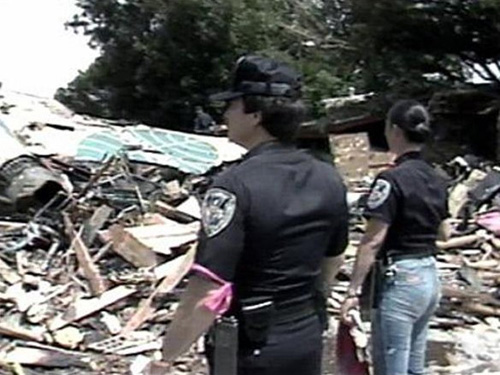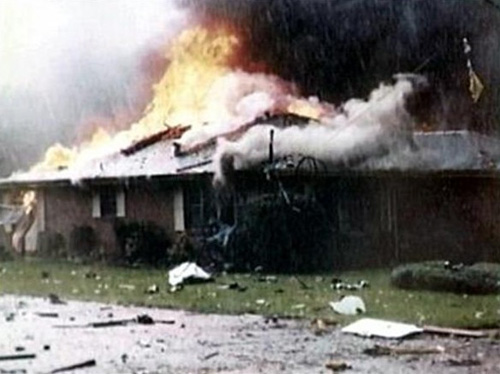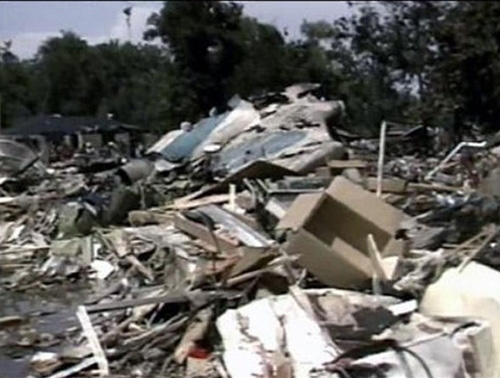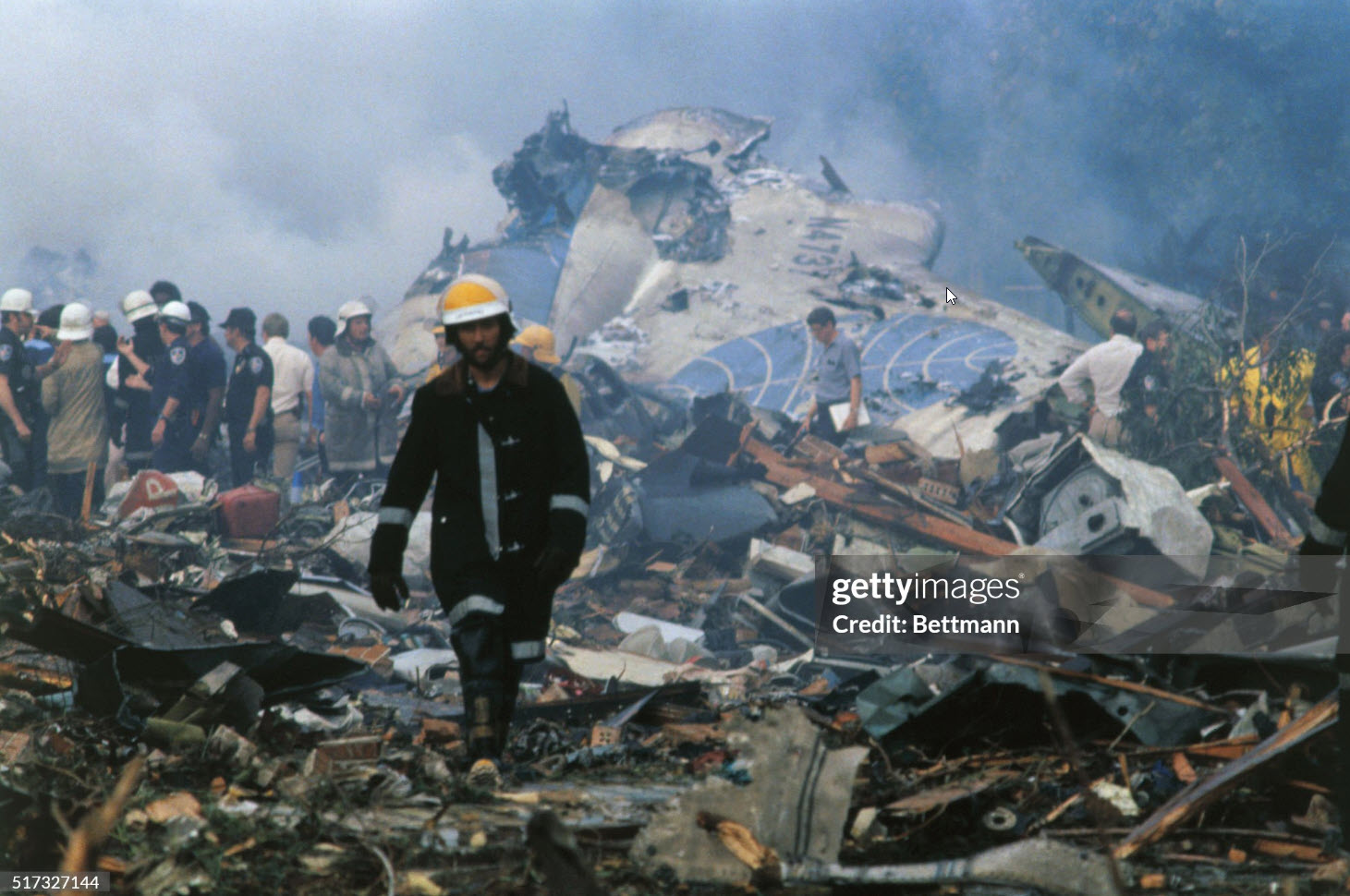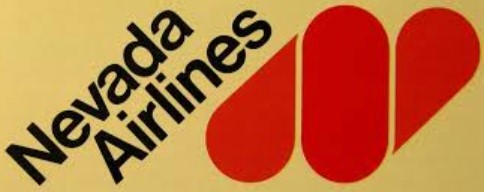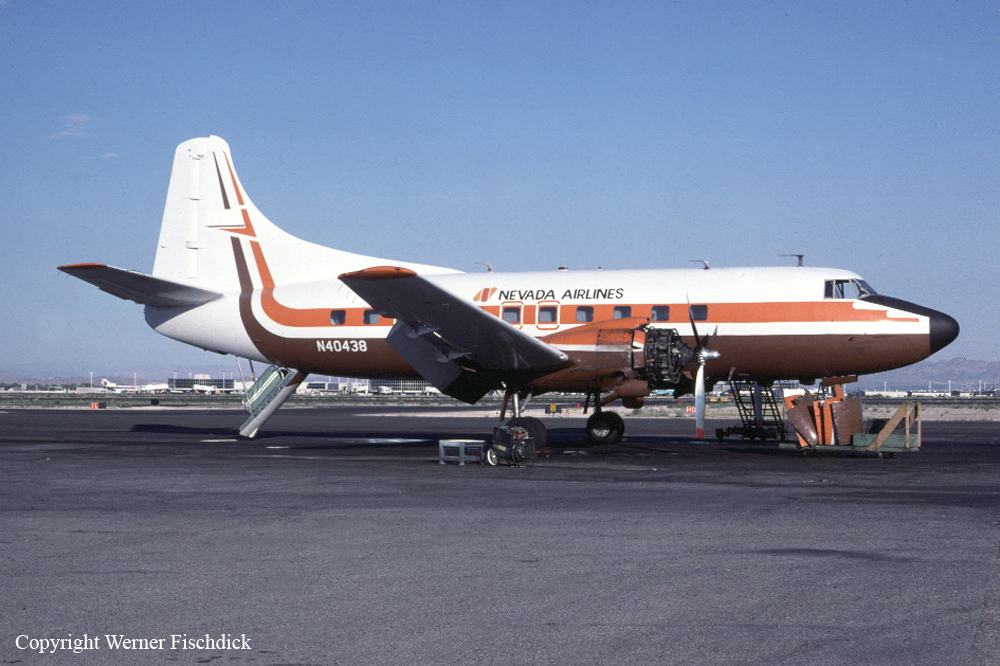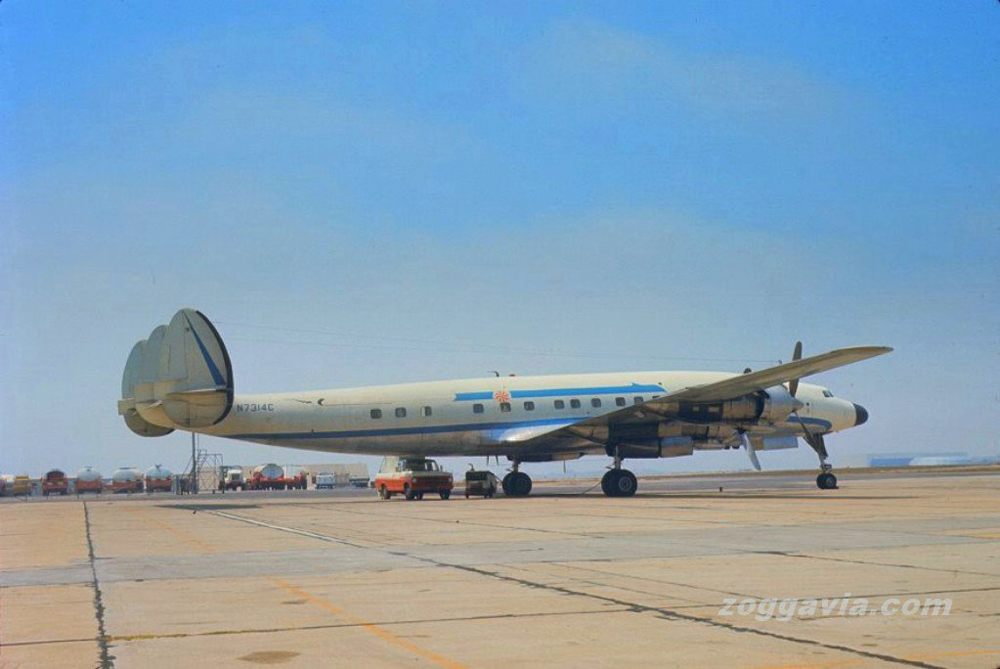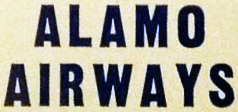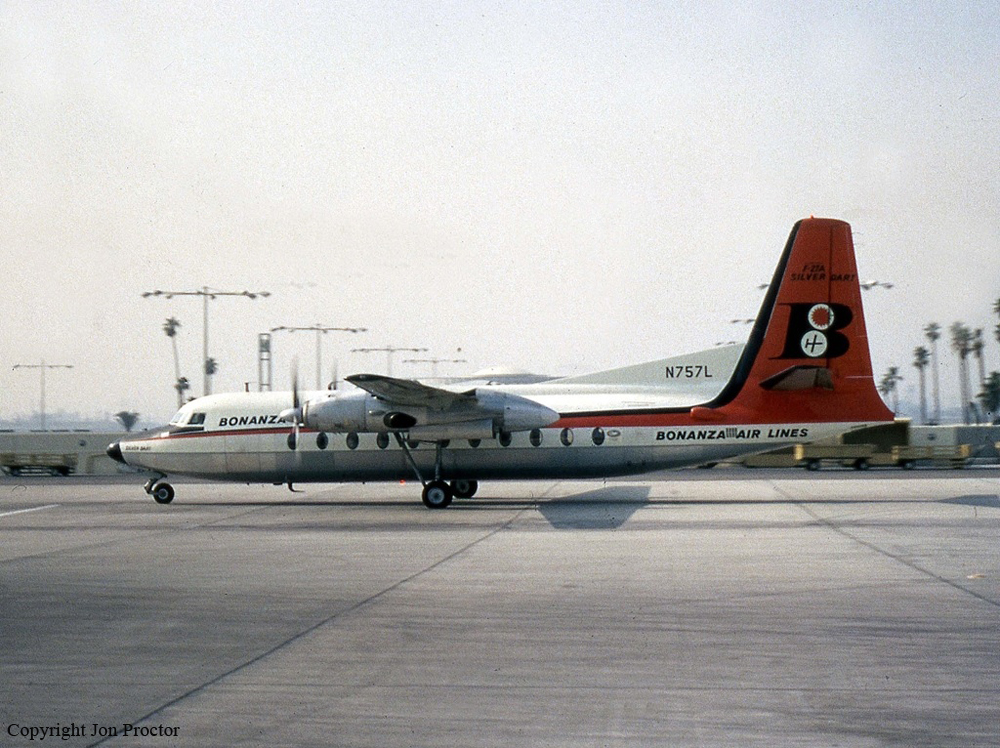Crash of a Cessna 401 in Henderson: 2 killed
Date & Time:
Nov 6, 1986 at 0144 LT
Registration:
N3219Q
Survivors:
No
Schedule:
Las Vegas – Albuquerque
MSN:
401-0019
YOM:
1967
Crew on board:
1
Crew fatalities:
Pax on board:
1
Pax fatalities:
Other fatalities:
Total fatalities:
2
Captain / Total hours on type:
17.00
Aircraft flight hours:
5083
Circumstances:
Approximately 5 1/2 minutes after departure and while the aircraft was climbing enroute, an unknown ignition source triggered an explosion of fuel/air vapor which existed within the interior of the left wing. Wing skin from the upper/lower wing surface was lost, however, the wing structure remained integral and the pilots continued to fly the aircraft executing a 180° course reversal back to McCarran-Intl Airport. Subsequent to the explosion a fire developed within the left engine area. As the aircraft continued back towards mccarran the airspeed gradually diminished and the landing gear were lowered. Shortly thereafter the left wing entered a stall condition brought about by a decrease of airspeed as well as the degradation of its lift developing capabilities due to the explosion induced damage. The aircraft then entered an uncontrollable left roll several hundred feet above ground from which a successful recovery could not be executed. Both occupants were killed.
Probable cause:
Occurrence #1: explosion
Phase of operation: climb - to cruise
Findings
1. (c) fluid, fuel - fumes
2. (f) wing - exploded
----------
Occurrence #2: fire
Phase of operation: maneuvering - turn to reverse direction
Findings
3. (c) engine assembly - fire
----------
Occurrence #3: loss of control - in flight
Phase of operation: descent - emergency
Findings
4. (c) airspeed - inadequate - pilot in command
5. (f) anxiety/apprehension - pilot in command
6. (f) gear extension - premature - pilot in command
----------
Occurrence #4: in flight collision with terrain/water
Phase of operation: descent - uncontrolled
Findings
7. (f) remedial action - not possible - pilot in command
Phase of operation: climb - to cruise
Findings
1. (c) fluid, fuel - fumes
2. (f) wing - exploded
----------
Occurrence #2: fire
Phase of operation: maneuvering - turn to reverse direction
Findings
3. (c) engine assembly - fire
----------
Occurrence #3: loss of control - in flight
Phase of operation: descent - emergency
Findings
4. (c) airspeed - inadequate - pilot in command
5. (f) anxiety/apprehension - pilot in command
6. (f) gear extension - premature - pilot in command
----------
Occurrence #4: in flight collision with terrain/water
Phase of operation: descent - uncontrolled
Findings
7. (f) remedial action - not possible - pilot in command
Final Report:


